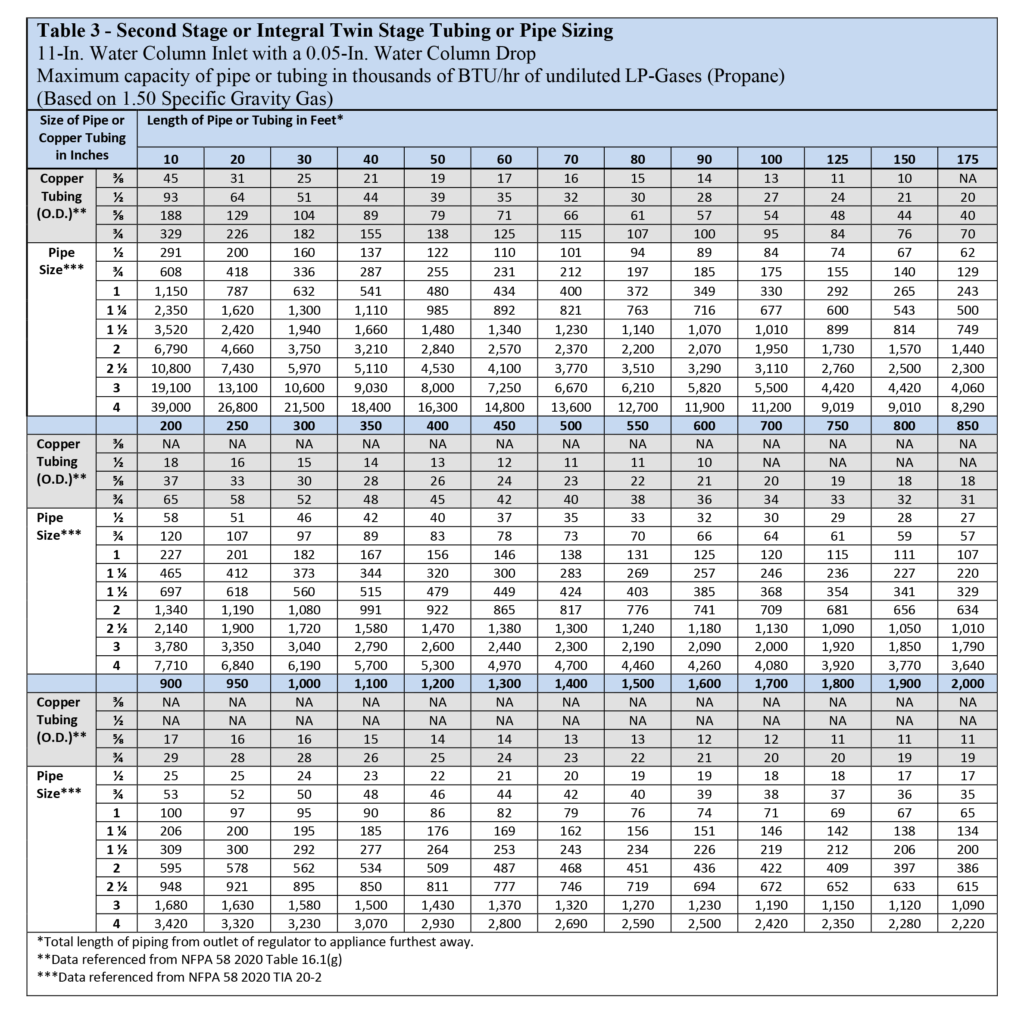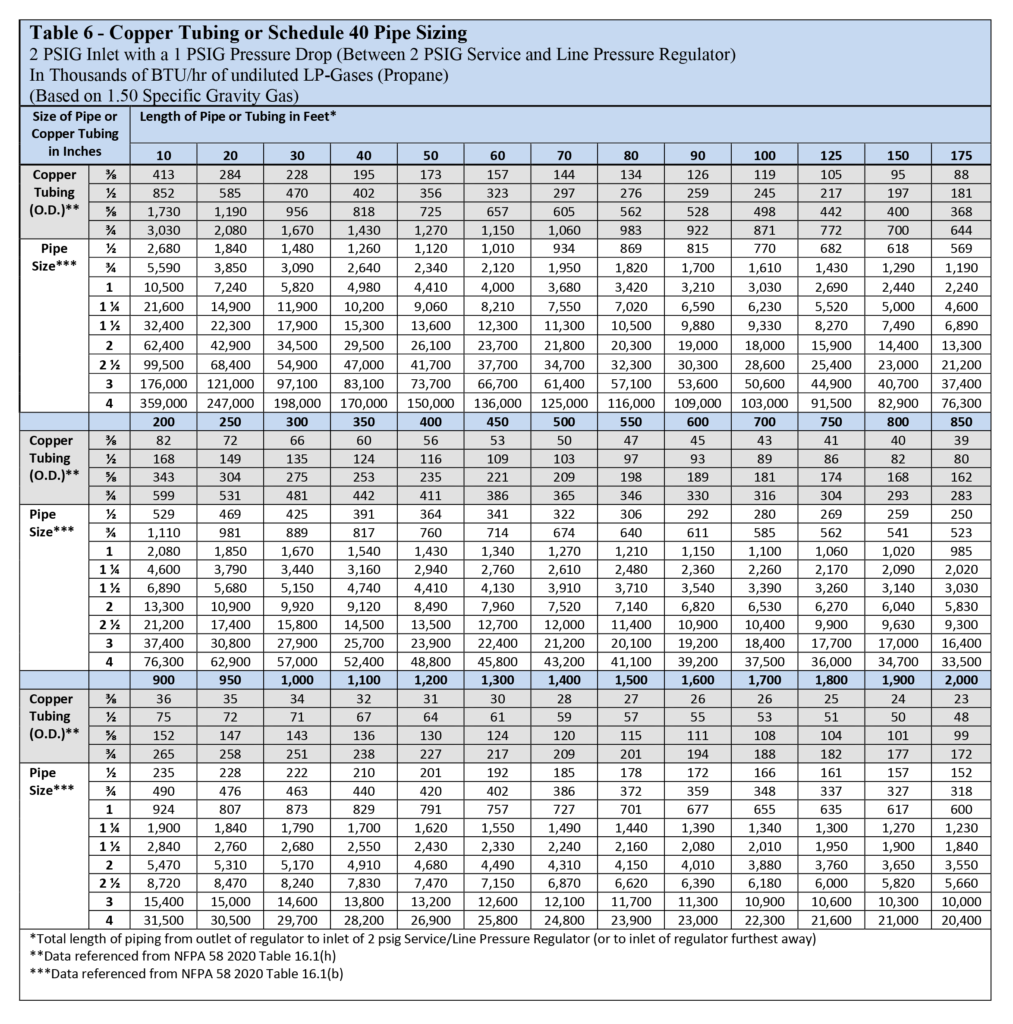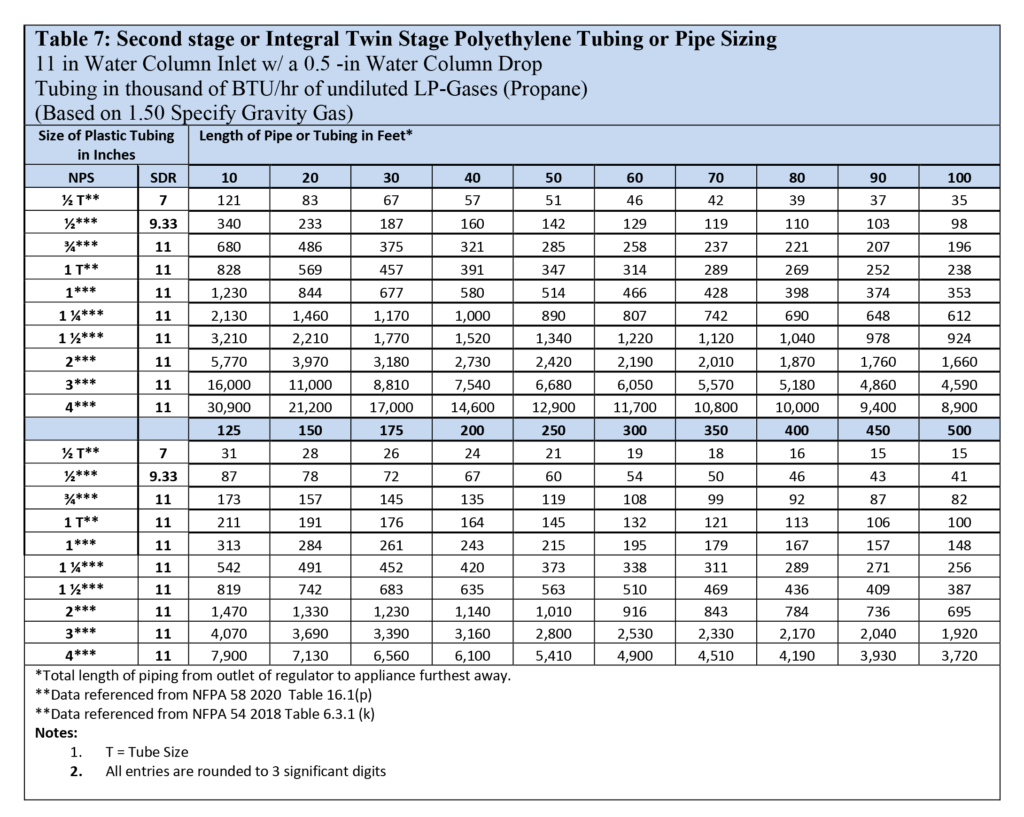Sizing Propane Piping Systems
Field Topics are intended to provide useful information to the network of authorized LP-Gas and Anhydrous Ammonia distributors regarding the proper use of RegO® products.
Warning Bulletins covering many of the hazards involved are available from RegO for more detailed information. These bulletins can be found in our L-500, L-102 and NH3-102 catalogs. Neither the Field Topic or the Warning Bulletins are intended to conflict with federal, state, or local ordinances and/or regulations, which should be observed at all times. This information also is not intended to be a substitute for or to supplement any training in the safe handling and use of propane and related equipment, as required by any applicable law. By providing this material, ECI assumes no responsibility for providing any such training. Only individuals properly trained in the safe handling and use of propane and related equipment should be permitted to do so, and by providing this information, ECI does not assume responsibility for providing such training
For more information on LP Gas system requirements, refer to Liquefied Petroleum Gas Code (NFPA 58), National Fuel Gas Code (NFPA 54), National Propane Gas Association Safety Handbook, the RegO LP-Gas Serviceman’s Manual L-545, RegO catalogs L-500/L-102/NH3-102, ANSI K61.1 Safety Requirements for Storage and Handling of Anhydrous Ammonia, as well as any applicable local codes and ordinances.

Sizing Propane Piping Systems
Pipe & Tubing selection is a vital process to the propane delivery system and requires a complete understanding. Improper selection can result in improper delivery pressure, improper combustion, poor equipment performance and much more.
Pipe sizing charts can be found in numerous code and standard publications including NFPA 54, NFPA 58, International Fuel Gas Code (IFGC), and International Residential Code (IRC). Please follow the latest edition for update sizing charts. The RegO app, L-545 serviceman’s manual, L-500 & L-550 selection slide chart are referenced from the latest updated versions of NFPA 58 & NFPA 54.
The two most common method of pipe sizing are done thru either the longest length method or the branch length method. When sizing to the longest length method, the pipe size of each section should be determined by using the longest length of piping from the point of delivery, the gas meter or regulator, to the most remote outlet and the load of the section. When sizing to the branch length method, the pipe size of each section of the longest pipe run, from the point of delivery to the most remote outlet, should be determined by the longest run of piping and the load of the section.
The Branch Length Method Instructions can be found in the RegO L-545’s Serviceman’s manual. This method is found to be the most used method for determining pipe sizing.
Instructions to Branch Length Method from RegO L-545 Serviceman’s Manual:
1. Determine the total gas demand for the system by adding up the BTU/hr input from the appliance nameplates and adding demand as appropriate for future appliances.

2. For second stage or integral twin stage piping:
a. Measure length of piping required from outlet of regulator to the appliance furthest away. No other length is necessary to do the sizing.
b. Make a simple sketch of the piping, as shown.
c. Determine the capacity to be handled by each Section of piping. For example, the capacity of the line between a and b must handle the total demand of appliances A, B, and C; the capacity of the line from c to d must handle only appliance B, etc.
d. Using Table 3 select proper size of tubing or pipe for each section of piping, using values in BTU/hr for the length determined from step #2-A. If exact length is not on chart, use next longer length. Do not use any other length for this purpose! Simply select the size that shows at least as much capacity as needed for each piping section.
3. For piping between first and second stage regulators
a. For a simple system with only one second stage regulator, merely measure length of piping required between outlet of first stage regulator and inlet of second stage regulator. Select piping or tubing required from Table 1.
b. For systems with multiple second stage regulators, measure length of piping required to reach the second stage regulator that is furthest away. Make a simple sketch, and size each leg of piping using Table 1, 2, or 3 using values shown in column corresponding to the length as measured above, same as when handling second stage piping.









Field Topic Conductor :
Cody Reeves – LPG Tech. Services Manager
10+ years as a Propane Service Technician including installation and service of gas equipment.
State of CT Licensed Gas & Oil contractor.
Graduated from a Technical high school majoring in HVAC






